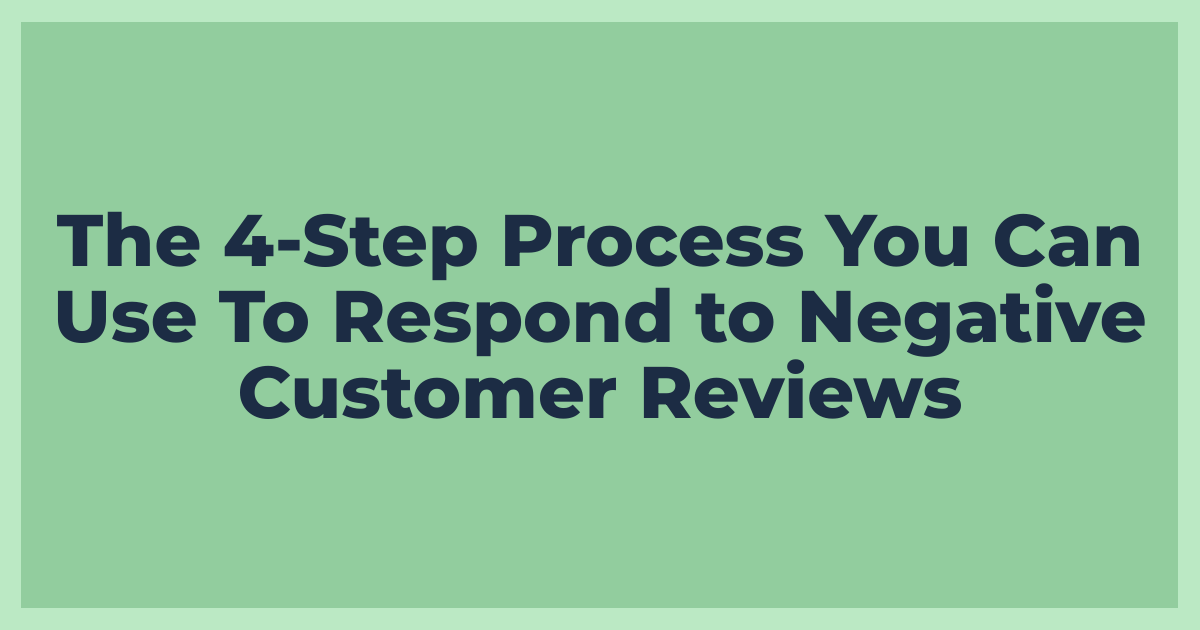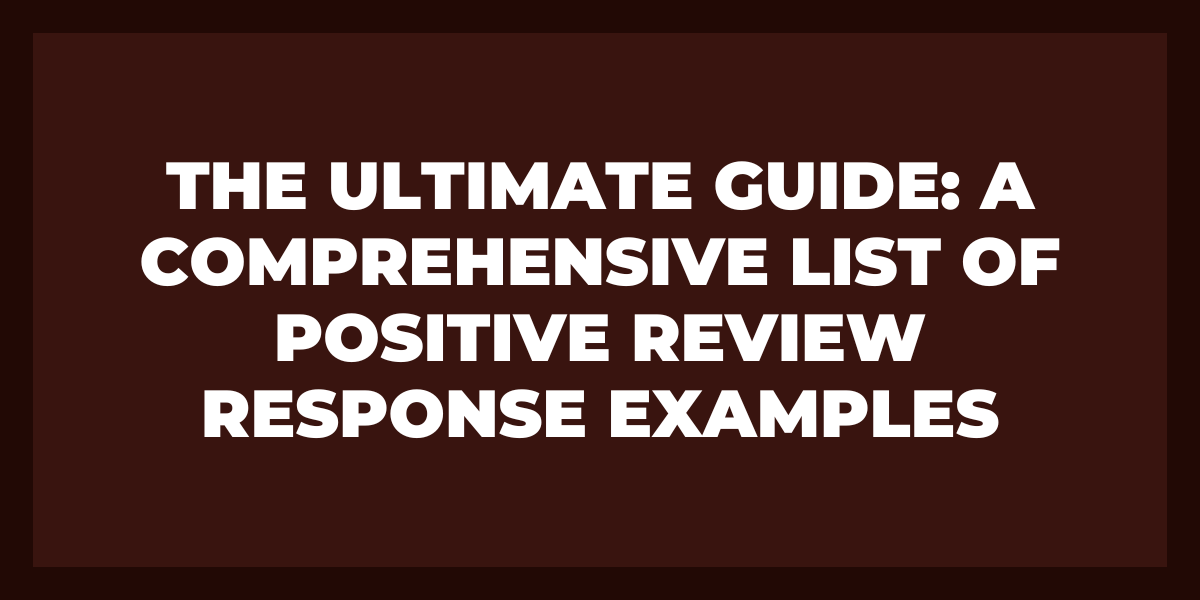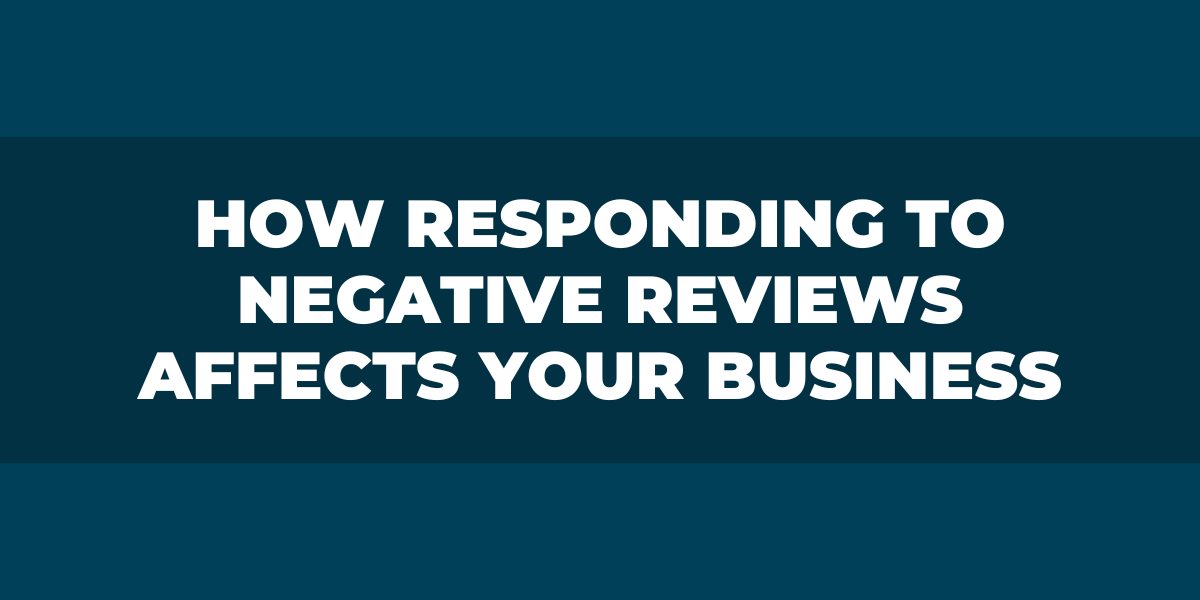Nobody’s perfect. We all know that, and we all accept it when we experience a few bumps in the road with a company or service we’re using.
But when those bumps turn into full-blown potholes, it can be really frustrating – and eventually, you air your grievances on social media. So what do you do if you find yourself on the receiving end of some bad reviews?
“Your brand name is only as good as your reputation.”
Richard Branson.
And your brand reputation is GREATLY affected by its online reputation. Potential customers may think twice about dealing with your company if you don’t handle negative reviews properly.
With that said, check out our 4-step process to help you navigate the situation!
1. Address The Reviewer Directly – Use Their Name
When you’re replying to a negative customer review, always address the reviewer by name. It’s a good customer service practice and helps to create a personal connection. This also shows that you’re taking the time to read and respond to their specific issue, and it also pulls them out of the faceless horde of other reviewers. Even if you can’t solve their problem, they’ll at least appreciate the effort!
2. Address Customer Concerns – Apologize & Sympathize
The next step is to directly address the customer’s concerns. This means more than just saying “I’m sorry.” You need to show that you understand what they’re going through, and why they’re upset. Try to see things from their perspective, and then craft your response accordingly.
For example, if a customer is complaining about a long wait time, you might say something like “I’m so sorry that you had to wait so long. We’re normally much faster, and we certainly didn’t mean to keep you waiting.”
This type of response shows that you understand their frustration, and it also offers a sincere apology.
3. Take Responsibility – 100% Ownership That We Messed Up
The next step is to take responsibility for the situation. This might be hard to do, especially if you don’t think that you or your company did anything wrong. But even if you don’t agree with the customer’s assessment of the situation, it’s important to take responsibility and show that you’re willing to make things right.
For example, if a customer is unhappy with a product they received, you might say something like “I’m sorry that you didn’t like the product. We’ll be happy to send you a replacement.”
This shows that you’re willing to work with the customer to make sure they’re satisfied, even if it means going above and beyond what they
4. Take the Conversation Offline – Who Can They Call Or eMail? Who Will Help Them Make It Right?
The final step is to move the process offline. This means getting in touch with the customer via phone or email and working with them to resolve the issue. This is often where you’ll be able to get the most information from the customer, and it’s also where you’ll be able to offer the best solution.
For example, if a customer is having trouble with a product, you might ask them to send you a photo of the issue so that you can troubleshoot the problem. Or if a customer is unhappy with a service, you might offer them a discount on their next purchase.
By moving the process offline, you’re showing that you’re committed to resolving the issue, and you’re also giving the customer the attention they deserve.
Whatever happens, do your best to ACTUALLY solve that problem.
Take It 1 Step Further: Turn Negative Feedback Into Positive Reviews
If you’ve followed all 4 steps, you now have the opportunity to turn that negative review around. It is without a doubt that you’ll be successful in doing so because you’ve turned a negative experience into a positive one. And these types of reviews are the best ones.
Always remember that it’s easier (and cheaper) to get an existing customer to do more business with you than it is to get a new customer!
More business + changing/updating their review – that’s what I call a win-win. Hopefully, this will make you embrace negative reviews.
Conclusion
No one is perfect, and that includes businesses. Sometimes things go wrong, customers are unhappy with a purchase, or they just have something negative to say about your company.
When this happens, it’s important to have a plan in place for how you will respond. The four-step process we outlined above should help you navigate these tricky waters and come out on top.
Have you ever had to deal with a negative review? What happened? Let me know in the comments! I’d love to hear from you.














